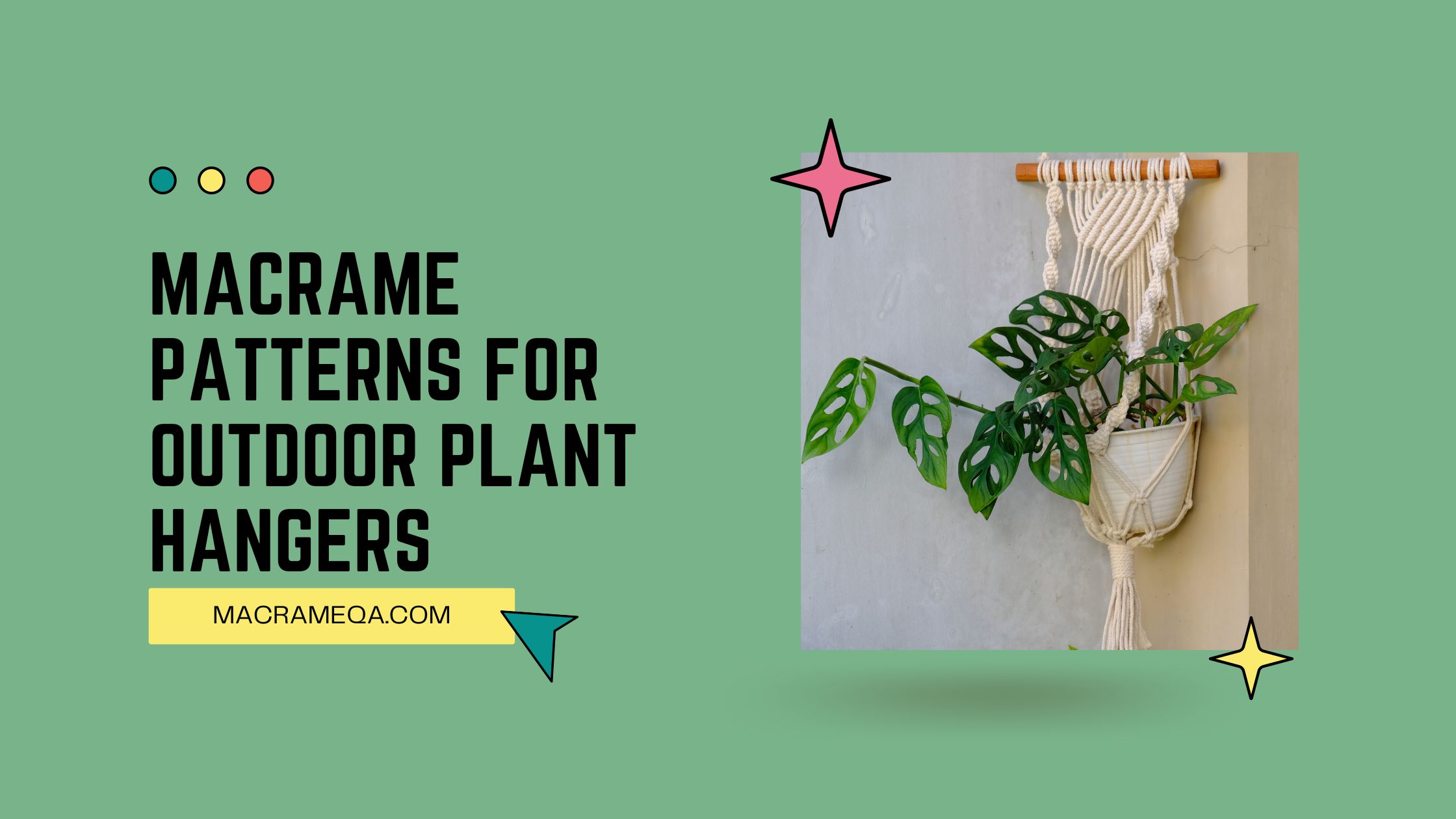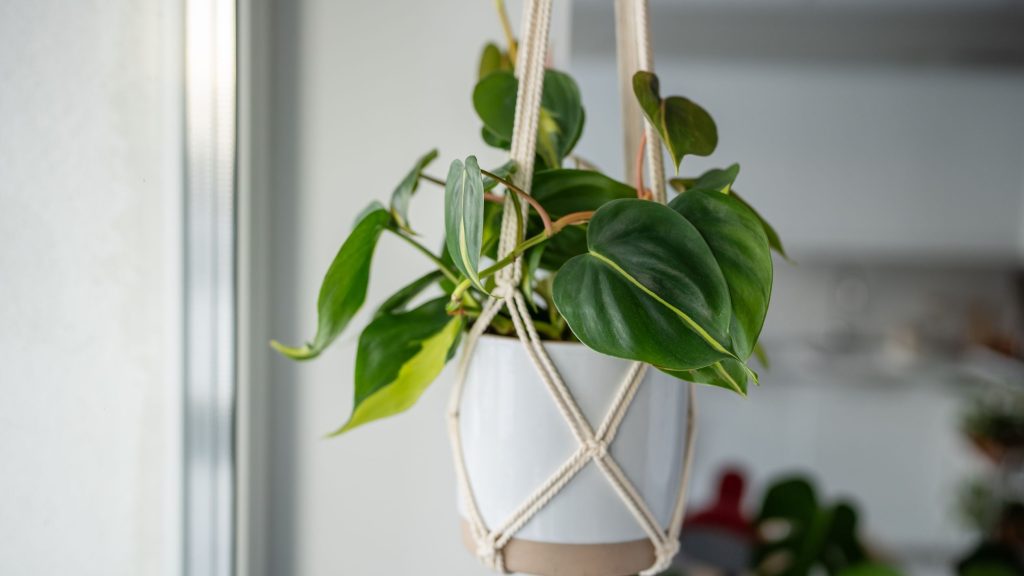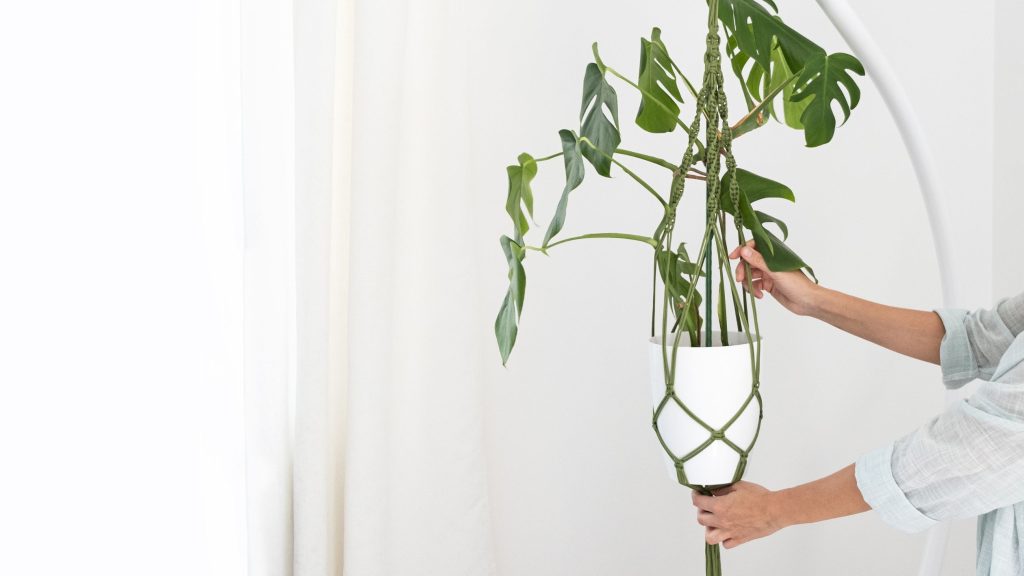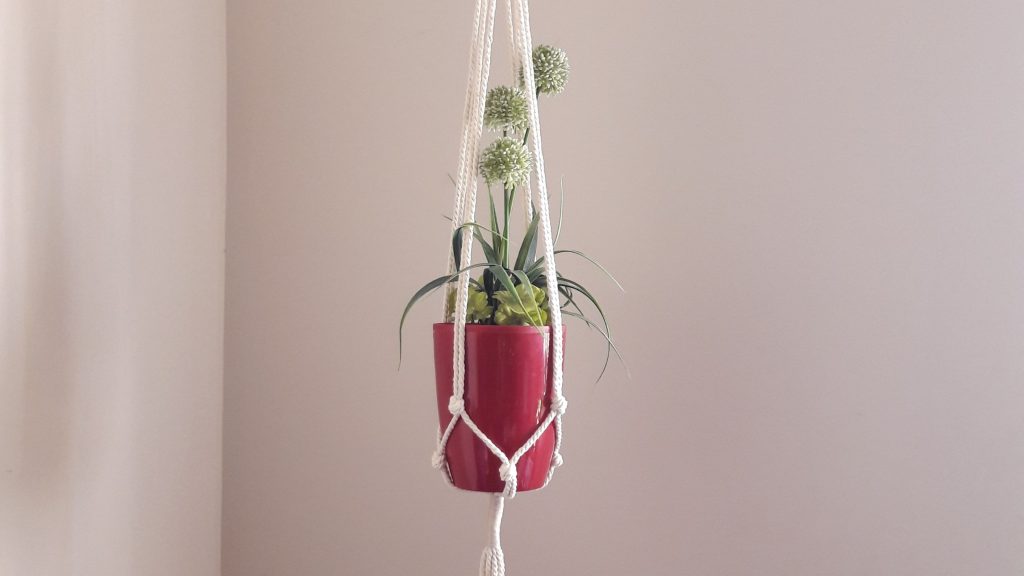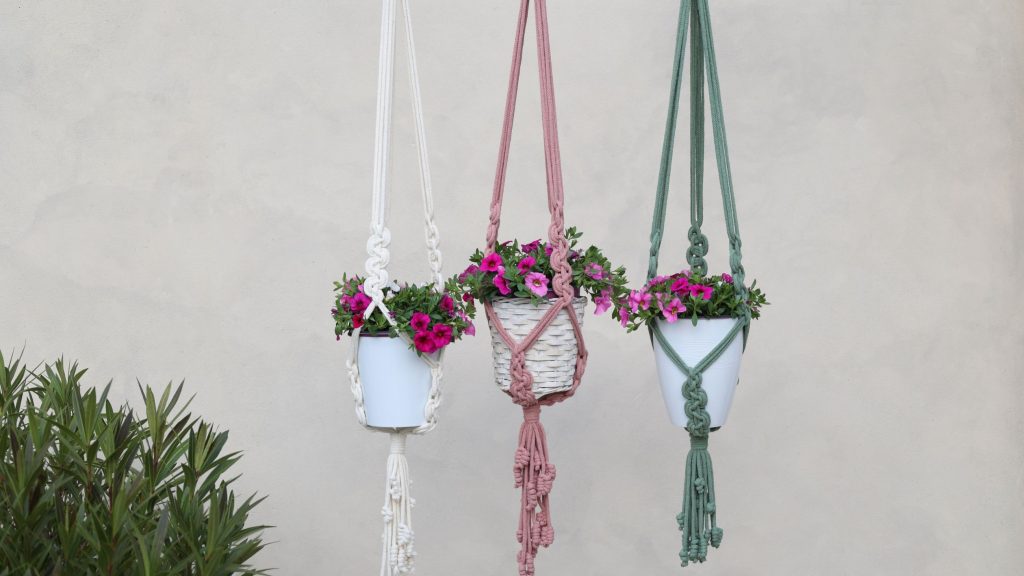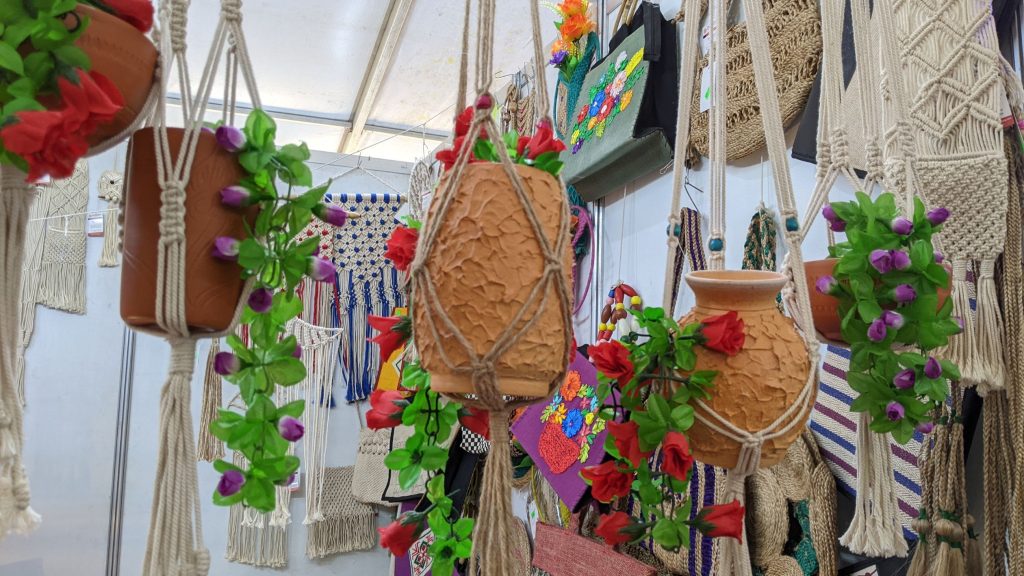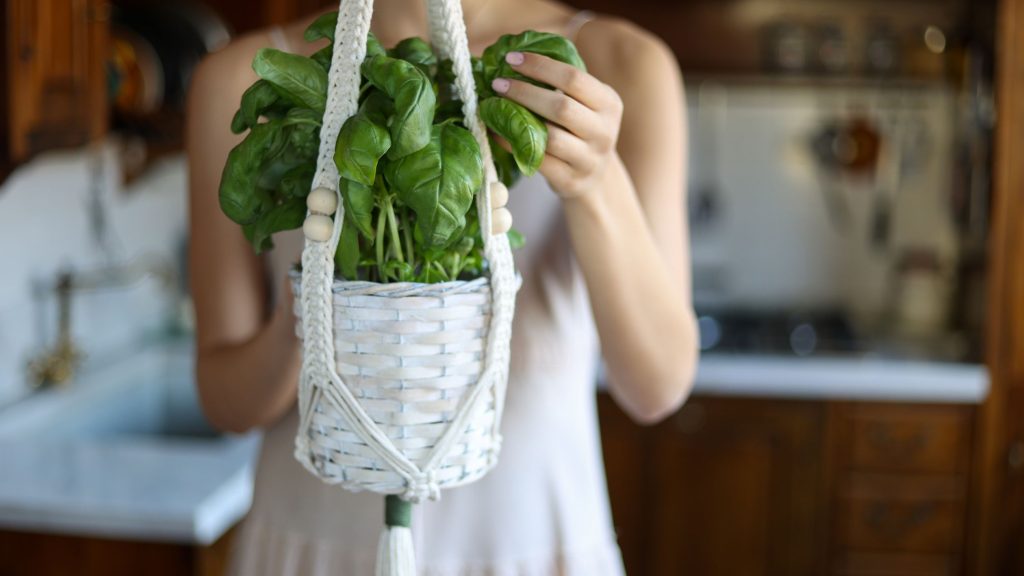So you’ve decided to add a touch of bohemian charm to your outdoor space with some macrame plant hangers. But how do you create those intricate patterns that will make your hangers truly stand out? Don’t worry, we’ve got you covered. In this article, we’ll guide you through the process of creating macrame patterns for your outdoor plant hangers, from choosing the right materials to mastering basic knots. Whether you’re a beginner or an experienced macrame enthusiast, these tips and tricks will help you create stunning hangers that will be the envy of your neighborhood.
Choosing the Right Materials For Macrame Patterns For Outdoor Plant Hangers
Selecting the Right Rope
When it comes to creating macrame patterns for outdoor plant hangers, one of the most important considerations is selecting the right rope. Opt for a rope that is durable and resistant to the outdoor elements. Nylon, cotton, and jute are popular choices as they are strong and can withstand various weather conditions. Additionally, consider the thickness of the rope, ensuring that it is sturdy enough to hold the weight of your plants.
Consider the Weather Conditions
Since your macrame plant hanger will be exposed to the outdoor elements, it’s essential to consider the weather conditions in your area. If you live in a rainy or humid climate, it’s advisable to choose a rope that is resistant to mold and mildew. Additionally, if you experience strong winds or harsh sunlight, opt for a material that can withstand UV rays and won’t fade or degrade easily.
Choosing the Right Hooks or Rings
To complete your macrame plant hanger for outdoor use, you’ll need to choose the right hooks or rings. Look for hooks or rings that are made of a durable material, such as stainless steel or brass, that can withstand the outdoor conditions. It’s also important to ensure that the size of the hooks or rings is suitable for the thickness of the rope you are using. This will ensure a secure and stable hanging mechanism for your plant hanger.
Planning Your Design
Deciding on the Length
Before you start creating your macrame plant hanger, it’s important to decide on the length that you want. Consider the height of the area where you plan to hang the plant hanger and the size of the plants you will be placing in it. A good rule of thumb is to measure the distance from the hanging point to the desired length of the plant hanger, and add a few extra inches for the knots and decorative elements.
Determining the Number of Strands
The number of strands you choose for your macrame plant hanger will depend on your desired design and the thickness of the rope you are using. For a simpler design, you can use four strands, but if you want a more intricate and textured look, you can use more strands. Experiment with different numbers of strands to find the design that suits your preferences.
Choosing the Knots and Techniques
There are various knots and techniques that you can use to create macrame patterns for outdoor plant hangers. The square knot pattern, alternating square knot pattern, and diagonal clove hitch knot pattern are popular choices. Each knot and technique will create a distinct pattern and texture, so it’s a good idea to browse through different macrame tutorials and experiment with different techniques. Choose the knots and techniques that you feel comfortable with and that best complement your desired design.
Creating Basic Macrame Patterns
The Square Knot Pattern
The square knot pattern is one of the most basic and versatile macrame patterns for outdoor plant hangers. To create the square knot pattern, you’ll need to alternate tying left and right knots with adjacent strands. This will create a series of square knots that form the body of the plant hanger. This pattern is great for beginners and can be easily customized by adding beads or incorporating different colored ropes.
The Alternating Square Knot Pattern
The alternating square knot pattern is a variation of the square knot pattern that creates a more intricate and textured design. This pattern involves tying square knots with an alternating sequence of strands. By alternating the starting strand of each square knot, you’ll create a twisted effect that adds visual interest to the plant hanger. Experiment with different color combinations and variations in the number of knots to create unique and eye-catching designs.
The Diagonal Clove Hitch Knot Pattern
The diagonal clove hitch knot pattern is a decorative macrame pattern that creates an angled design. To create this pattern, you’ll need to tie diagonal clove hitch knots with adjacent strands. The knots should be tied from left to right or right to left, creating a diagonal pattern. This pattern is perfect for adding visual interest and complexity to your macrame plant hanger.
Adding Variations and Decorative Elements
Incorporating Beads or Shells
To add a touch of elegance and individuality to your macrame plant hanger, consider incorporating beads or shells into your design. You can thread beads onto individual strands or incorporate them into the knots themselves. Shells can be attached using knots or by creating loops for them to rest in. Experiment with different types and sizes of beads and shells to create unique and personalized macrame patterns.
Using Different Colors or Dyeing Techniques
Another way to add variation and visual interest to your macrame plant hanger is by using different colors or dyeing techniques. You can choose ropes of different colors and alternate them in your pattern to create a vibrant and eye-catching design. Alternatively, you can experiment with dyeing techniques, such as dip-dyeing or ombré, to create a gradient effect. Choose colors that complement your outdoor space or match the colors of the plants you will be hanging.
Adding Fringes or Tassels
To give your macrame plant hanger a bohemian or playful touch, consider adding fringes or tassels. Fringes can be made by unraveling the ends of the ropes or by attaching additional strands and knotting them in a specific pattern. Tassels can be created by gathering a few strands together and tying them off with a separate piece of rope. These decorative elements add movement and texture to your macrame plant hanger, making it even more visually appealing.
Tips for Hanging Outdoor Plant Hangers
Choosing the Right Location
When it comes to hanging your macrame plant hangers outdoors, it’s important to choose the right location. Consider the amount of sunlight your plants need and choose a spot that provides the appropriate lighting conditions. Also, take into account the weight of the plants and choose a sturdy support structure, such as a beam or a strong tree branch, that can safely hold the weight. Avoid hanging your plant hangers in areas prone to strong winds or direct exposure to harsh weather conditions.
Using Secure Mounting Hardware
To ensure the stability and safety of your outdoor plant hangers, it’s essential to use secure mounting hardware. Depending on the location and surface you are attaching your plant hanger to, you may need different types of hooks, screws, or brackets. Opt for hardware that is specifically designed for outdoor use and can support the weight of your plant hanger and plants. Follow the manufacturer’s instructions for installation and regularly inspect the hardware to ensure it remains secure.
Considering Weight Limits and Plant Size
Before hanging your macrame plant hangers, it’s important to consider weight limits and the size of your plants. Different ropes and hooks have different weight limits, so make sure to choose materials that can safely support the weight of your plants. Additionally, consider the size of your plants and ensure that they have enough room to grow and thrive in the plant hanger. Regularly monitor the weight of the plants and adjust the hanging mechanism if necessary.
Maintaining and Caring for Your Macrame Plant Hanger
Regularly Inspecting the Rope and Knots
To ensure the longevity and safety of your macrame plant hanger, it’s important to regularly inspect the rope and knots. Check for any signs of wear, fraying, or damage in the rope itself. Pay close attention to the knots and make sure they are secure and tight. If you notice any issues, it’s recommended to re-tie or replace the affected sections to prevent accidents or damage to your plants.
Cleaning and Removing Dirt or Stains
Outdoor plant hangers are bound to collect dust, dirt, and stains over time. To keep your macrame plant hanger looking fresh and clean, it’s important to regularly clean and remove any dirt or stains. Gently brush off any loose dirt and use a mild soap or detergent solution to remove stubborn stains. Rinse the rope thoroughly and allow it to dry completely before rehanging your macrame plant hanger. Regular cleaning will help prolong the lifespan of your plant hanger and keep it looking its best.
Conclusion
By following these tips and considerations, you can create beautiful and functional macrame patterns for outdoor plant hangers. Whether you’re a beginner or an experienced macrame artist, the possibilities for design variations and decorative elements are endless. Get creative, experiment with different patterns and materials, and enjoy the process of creating unique macrame plant hangers that will beautify your outdoor space and showcase your plant collection in style.

